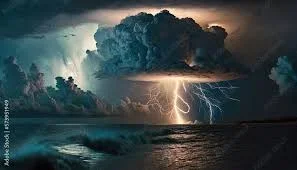Fully agree with the rest of your post, but the crux of their paranoia about us by Goras is what i've bolded.
They have many theories but nothing sticks.
They have a lot of colonial era literature that "works" for their divide and rule for that time and for random protests here from time to time, however they cannot answer the core question in bold, or perhaps they don't want to accept the answer.
Perhaps deep down the Anglo-Saxons regret leaving India in one piece in the hubris that it would self-combust like Yugoslavia or Austro-Hungary.
At the end of the day it is the idol-worshiping, polytheistic India with it's many caste and language fissures that is still today in one piece while another "Mazhub is the glue holding us together" pet of the West is in two pieces.
It's both because they are paranoid but also because they view us as weaklings who are destined to be Western slaves, every Quad meeting or purchase from the US feeds their confirmation bias.
The W*st too are control freaks just more insidious than the Chinku
The answer is easy for all to see, but no one will ever see this because of 'muh western history bias'.
The answer is, 'India' as a concept has existed for thousands of years and first ever put in practice by the Magadh empire, which has been the aspiration of EVERY SINGLE empire in Indian history ( till the moozies came) strove to unite India as their ultimate goal.
Look at the titles held by practically every single Indian emperor in the 500s-1000 CE period that controlled the north but not the south ( such as Harsha, Palas, Pratiharas, Maukharis, etc) : Uttarapathaswami. Literally 'Lord of the northern route'.
What title do we find most commonly amongst Satavahahas, Chalukyas, Rashtrakutas, Vakatakas ? 'Dakshinapatheswami'. ie, LITERALLY 'lord of the southern route'.
How can you have concept of 'lord of northern half/lord of southern half', if you cannot define what it is the half of ( india) ?
Granted, south is hemmed in with geography, but the north isnt- why are the titles of Uttarapatheswami never ever EVER held by Afghani hindus like hindushahis or turkishahis ? because they DIDNT control the 'northern route' that is route from Tamralipti to Gandhara.
If you look at the Iron pillar of Mehrauli, what is the most exalted upon accomplishment of this 'chandra' from the Iron pillar ? What is he MOST acclaimed for, from the one pillar that clear-cut celebrates him ( this Chandra is most likely Chandragupta Vikramaditya, son of Samudragupta) ?
Answer: being the one who 'united the eastern and western seas and left the southern ocean perfumed with his fragrance' being the nearly precise words of the gupta script inscription.
Again, a very India-centric notion of 'yay we finally conquered all of western and eastern India'.
Notice from Gupta dynasty/Harsha/Shunga dynasty etc. that whenever an emperor did their ashwamedha yajna, they send their horse as far as gandhara and sindh but no further. Ironic, isnt it, given that horses survive and thrive much better in Afghanistan than anywhere east of the Indus, that some royal going 'everywhere the horse steps on is mine' didnt ever go to the land where his horse has better chance of survival ? Even when said lands paid homage to them as vassals, they never saw an ashwamedha horse. Why ? because they are not PART of India in the ancient concept and you dont send your cultural symbols of supremacy to foreigners who dont know what this means.
( a good reason as to why you dont do this, is the Greco-Persian wars. the GENESIS of which, is Sakhamani Persians assuming that the Athenians would 'know' the customs of the great persian empire and know that sending a token of 'earth and water' is sending symbolic vassalage of all land and water under your control to the persians and not some 'lol send them some mud and amphora of water, curious barbarians' like the Athenians thought and their entire initial conflict is from 'fuck u u submitted to being my vassal, fuk u, i didnt, i send u some clay and water coz i thought u r a desert dude' stuff).
Look at the terms we use for Hindu Kush/Suleiman mountains in the oldest sections of our literature :
Hindu Kush region is named as 'Parupreisena' by the Sakhamani Persians ( Its not some dumb Achaemenid dynasty, its Sakhamani- that is the name they used, not as a royal titular descent name as Herodotus assumed, but as the original indo-iranian word 'sakha' meaning friend and 'mani' means 'jewel', aka one who is with many friends/one who is valued as friend, a homage to their multi-ethnic empire) and Paropamisus by the Greeks of the Alexandrine period.
Yet, the term is Sanskrit in origin, being 'Para-uparasthana' - meaning 'beyond (para) the upraised lands'.
The term ONLY makes sense from an Indian POV looking towards Iranian plateau/Central Asia, not otherwise, as Iranian plateau ITSELF is the upraised land and that term must come from outside said region.
Same with Mahabharata - The Hindu kush is named 'paryatra parvata' and is specifically said to be in the western sides of mount meru, aka western sides of jambhudwipa, aka Indian subcontinent.
EVERYWHERE in Indian history you look, there is a very strong sense of 'India' within roughly the same maximal limits as the Indian subcontinent. THIS is the glue that holds India together as psyche, that goes deeper than just religion or shared history and THIS is the part that is singularly ignored in conventional history.









